Stages of preparing potatoes for planting
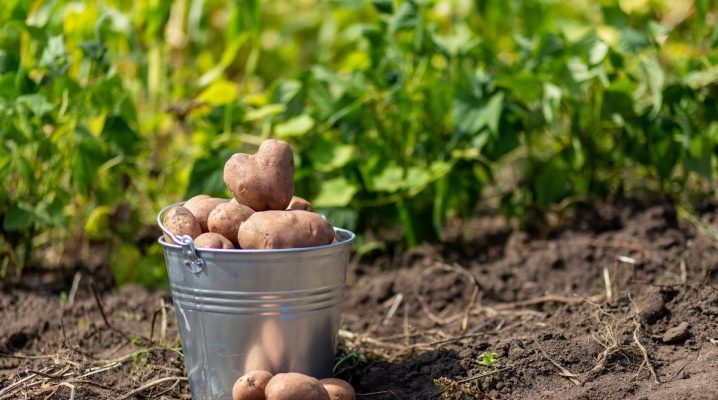
It may seem to some that to plant potatoes, it is enough to bury the tuber in the ground, however, this is considered the most ineffective method. In order to get a bountiful harvest in the future, the planting material will need to be properly prepared, having undergone a number of procedures.
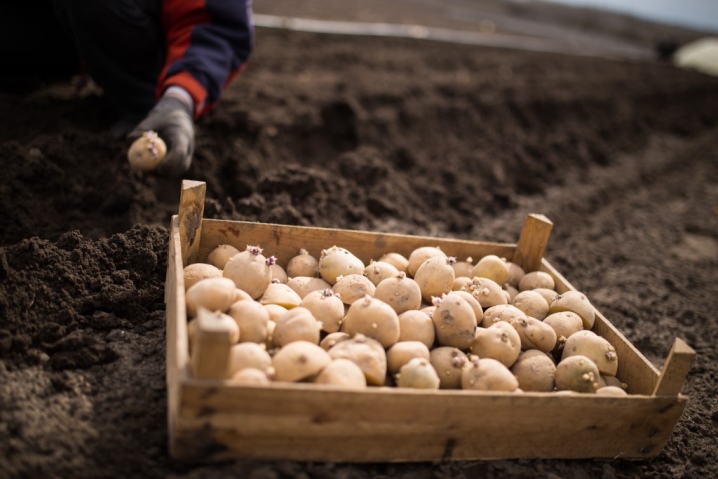
The need for preparation
Preparing tubers before planting, also known as vernalization, is mainly done to get a good harvest. A set of measures, including processes from germination to disinfection, allows you to stimulate the biological processes occurring in potatoes, and therefore, to promote early germination of roots and the appearance of sprouts. So, vernalized samples emerge about 2 weeks faster than normal ones. Seedlings from this seed grow strong and healthy.
In addition, the treatment of tubers makes it possible to protect them from diseases and insects, which means that it leads to an increase in yield. A big plus is the ability at the preparation stage to reject material with weak sprouts or symptoms of rot, which will not be able to give a good harvest.
The germination rate of the prepared material is almost 100%, therefore, having attended to the preparation, you can not worry about the appearance of bald spots in the beds.
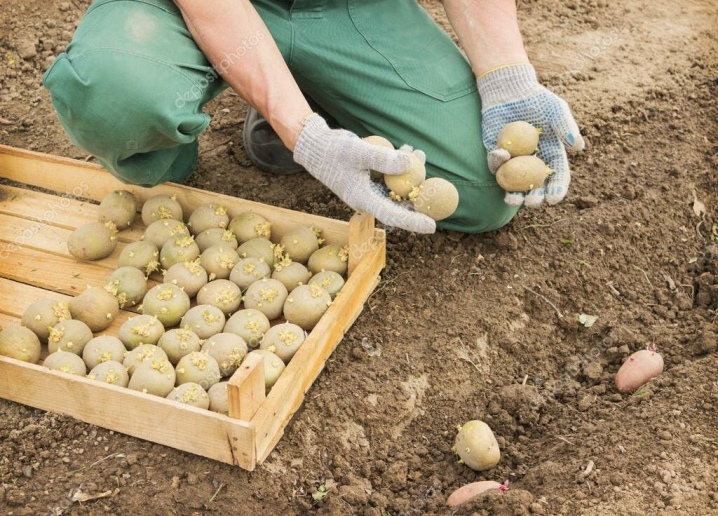
Selection of tubers
It is customary to select planting material in the autumn, when the harvest is fully completed. First, all tubers extracted from the ground are laid out on a horizontal surface illuminated by the sun and dried. Further, those that have mechanical damage or symptoms of diseases are excluded from them.
Finally, only samples weighing 40 to 80 grams are left for inoculation. Optimal, by the way, are tubers the size of a chicken egg and weighing 60 grams... However, a slight deviation in one direction or another is not considered critical. In the spring, the selected material is recommended to be reviewed again for any deviations from the norm.

Landscaping and calibration
It is customary to begin the direct preparation of potatoes for transfer to open ground with landscaping. The essence of the procedure is in keeping the tubers in the light, as a result of which chlorophyll will be formed in them and solanine will accumulate. The latter, although it is a poisonous component that can harm a person, is even more dangerous for fungi and bacteria, and therefore carries out the prevention of common diseases.
In addition, the green material improves its keeping quality and, due to its hardness, gains protection against rodents. It is customary to carry out the procedure in the autumn, but it is not scary to do it in the spring before germination.
Whole tubers are arranged in a single layer in a space where room temperature and indirect lighting are maintained. In principle, a terrace, a place under a porch canopy or lush branches of a tree can also come up. Once every 3-4 days, they are turned over for even landscaping.
After a couple of weeks, when the potatoes acquire a bright green hue, you can proceed to the next stage of preparation.
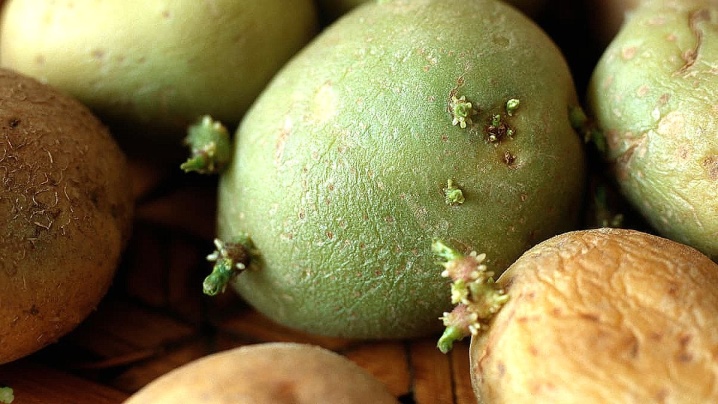
Calibration, that is, sorting of tubers, is carried out so that specimens of a similar size coexist on the beds. Since the germination period depends on the size of the potatoes, such a procedure will make the growing process much more efficient: taller and overgrown plants will not oppress only the sprouting sprouts.
During calibration, which is most often done by eye, all material is divided into three groups. The first includes small tubers weighing 40-55 grams, the second - medium ones of 55-70 grams, and, finally, the third goes to the largest samples heavier than 70 grams. Again, this procedure is most conveniently carried out in the autumn.

Germination methods
There are several ways to sprout potatoes.
Wet
To create conditions for wet germination, it will be necessary to prepare containers - baskets or boxes filled with a moistened substrate. As the latter, options such as peat, sawdust, humus or sphagnum moss are suitable. Containers filled with tubers in 1-2 layers, sprinkled with a moist substrate, will need to be placed in a darkened space in which the temperature is maintained from +12 to +15 degrees.
For a couple of weeks, sawdust or peat will have to be regularly moistened, not allowing it to dry out. After the procedure, which lasts up to 20 days, the tuber will have not only full-fledged sprouts, but also strong roots.
In addition, potatoes will lose less moisture, and therefore less nutrients.

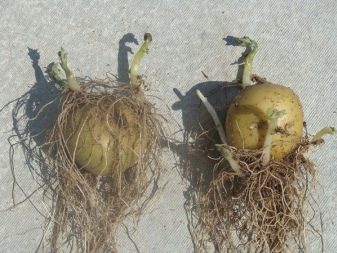
Dry
Dry germination is possible in cases where the seed receives diffused lighting and the required temperature: in the first couple of weeks - from +18 to +20 degrees, and subsequently - about +10 to +14 degrees. The light will allow the tubers to form strong sprouts and to store up solanine.
The dry method requires spreading the seeds in one or two layers on a straight horizontal surface - a table, windowsill, or even the floor. In principle, it is not forbidden to distribute potatoes in boxes with lattices made of wood or plastic, but in this case, the containers will have to be rearranged regularly for uniform illumination.
Hanging seeds in nets or transparent bags with holes is also a good option. The procedure itself lasts about a month - during this time, shoots up to 2 centimeters in size should appear on the potato. By the way, it is she who should be given preference if the preparation began in the spring, and it was not possible to carry out landscaping in the previous fall.
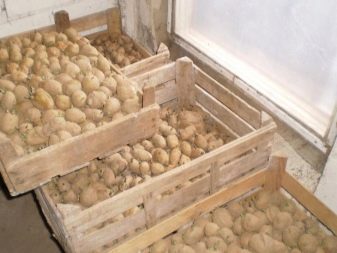
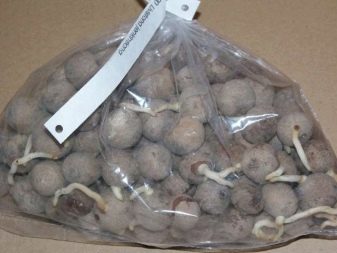
Combined
Combined germination mixes wet and dry methods. For the first three weeks, the tubers are illuminated, and then they are harvested in a container with damp peat or sawdust.
In the dark, the potatoes have to be kept until the roots hatch near the sprouts.
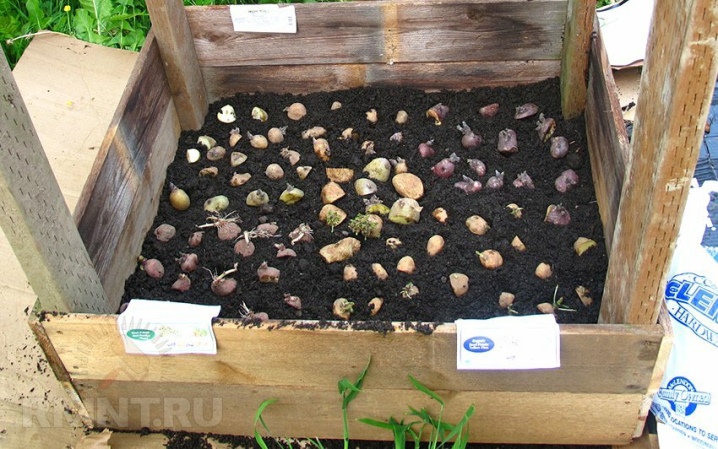
Warming up
It is customary to heat potatoes in cases where there is no special time for preliminary events. In this case, the tubers will have to be kept in a space where it is possible to increase the temperature. For the first 4-6 hours, the planting material should remain in conditions of +12 - +15 degrees, and for the next 2 hours - at +14 - +17 degrees.
Then, once every couple of hours, the temperature rises by 2 degrees until it reaches +22 degrees. It should be mentioned that if the tubers were recently removed from the cellar or earthen pit, the first 1-2 days they should stay in conditions of +10 - +15 degrees. For all warming up, usually 3-4 days are allocated.
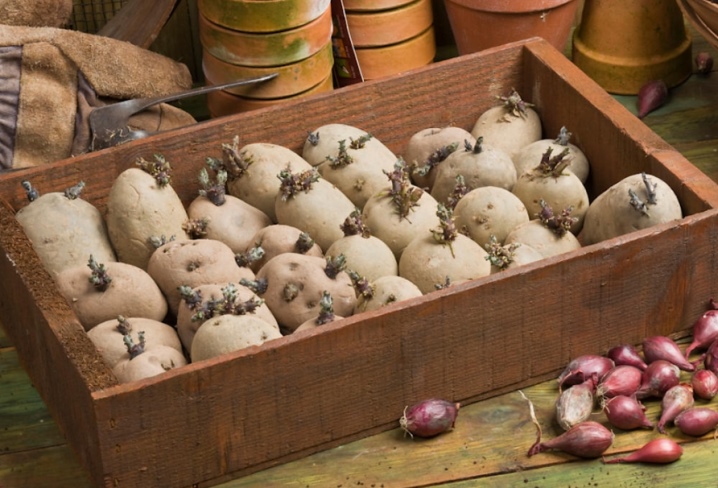
Wilting
Wilting is chosen when the tubers have not been removed from the subfloor in a timely manner. This procedure lasts about 1-2 weeks. The tubers are transferred to a place where they are maintained at +18 - +20 degrees, and then laid out in a single layer. The presence of light is not a prerequisite, but it will not be superfluous.
In a heated space, potatoes will begin to lose moisture and at the same time form enzymes that activate the awakening of the eyes and germination of sprouts.
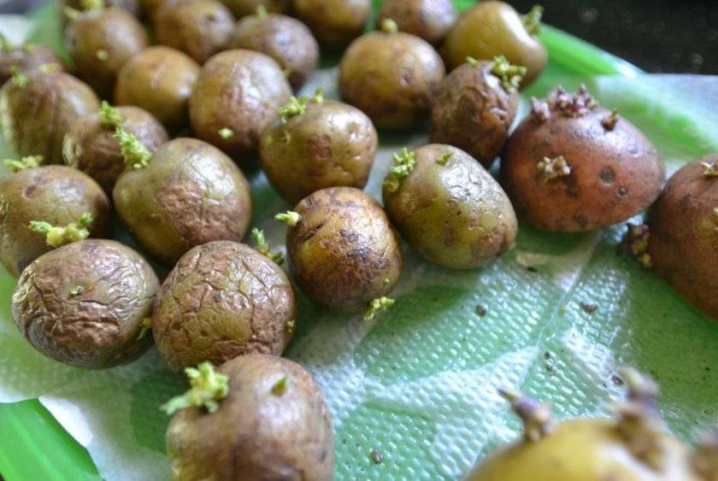
How and what can be processed?
If the tubers are properly sprayed or soaked, many problems can be prevented.
Disinfection
Disinfection of potatoes prevents the development of fungal and bacterial diseases. The procedure is usually carried out either immediately before germination, or a few days before planting in the ground. As a rule, for this purpose, purchased drugs are used, diluted according to the instructions: "Fitosporin-M", "Pentsikuron", "Fludioxonil" and others. Such versatile tools as "Prestige", "Commander" and "Maxim", will also help protect potatoes from pests. Pharmayod, he is also a ten percent aqueous solution of iodine, is also used to disinfect tubers.
Spraying the planting material with a 1% solution is quite popular. bordeaux liquid. It would be even better to dilute 20 grams of copper sulfate and 1 gram of potassium permanganate in a non-metallic bucket of water, and then use the resulting mixture to wet all the tubers. In the process, it should be borne in mind that first, the drugs are dissolved in a liter of heated water, and then the amount is increased to 10 liters.
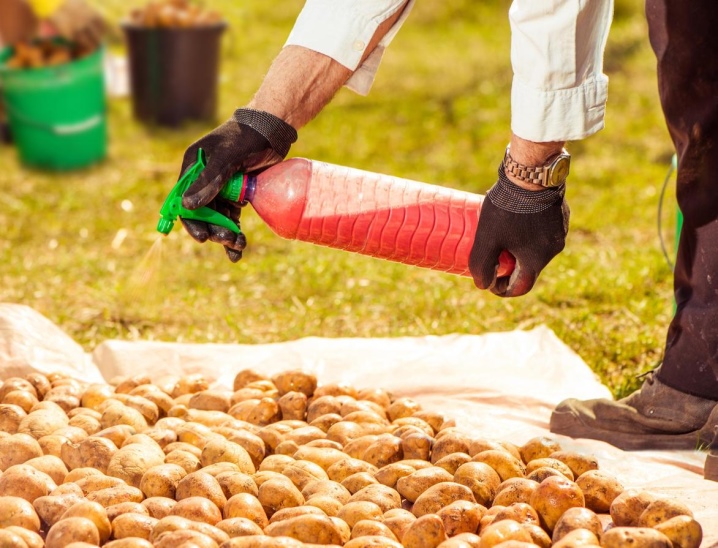
It is considered very effective to soak the material for half an hour in boric acid, potassium permanganate or zinc sulfate.... A bucket of water requires 50 grams of the first component, or 1 gram of the second or 10 grams of the third. If formalin is selected for processing, then 30 grams of the drug is diluted with a bucket of water, and then the potatoes are soaked in the resulting mixture for 15 minutes.
Some folk remedies are also suitable for disinfection.... For example, it is proposed to combine a kilogram of wood ash with 10 liters of water. For convenience, the tubers are laid out in a net, and then dipped in the resulting solution. These potatoes will need to be dried before planting.
To enhance the effect, each dug hole will also need to be powdered with 2 tablespoons of powder.
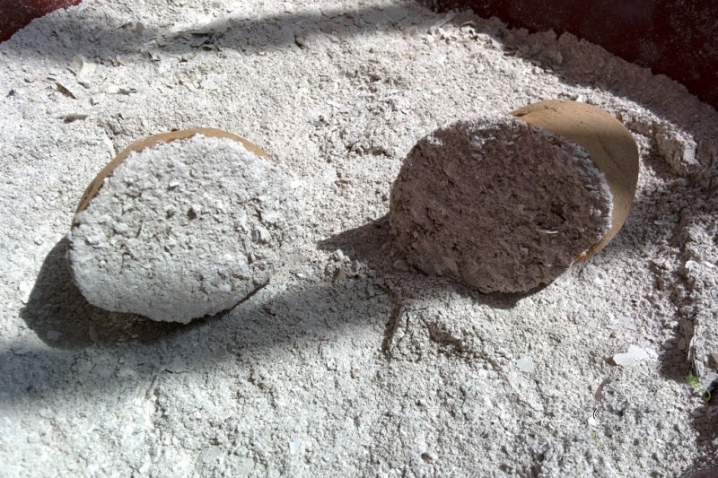
From pests and diseases
Most often, potatoes become a target for the Colorado potato beetle and wireworm, therefore pre-sowing treatment should include protection from them. Purchased insecticides are most effective, for example, Taboo and Prestige... Work with the poison should be done, having previously protected your hands with gloves, and the respiratory system - with a respirator. Of course, you must act solely according to the instructions. Such treatment saves from the wireworm throughout the growing season, but in the case of the Colorado potato beetle, it will take a month to pickle the insect.
To enhance protection against pests, ash, the use of which is described above, and birch tar are also used. The latter, in the amount of a tablespoon, is diluted in a bucket of water, and then the tubers are dipped into the resulting mixture. It will be possible to resist scab, rot, powdery mildew and late blight with the help of Fitosporin. Treatment with the drug is carried out immediately after selection or calibration, or a couple of hours before planting.
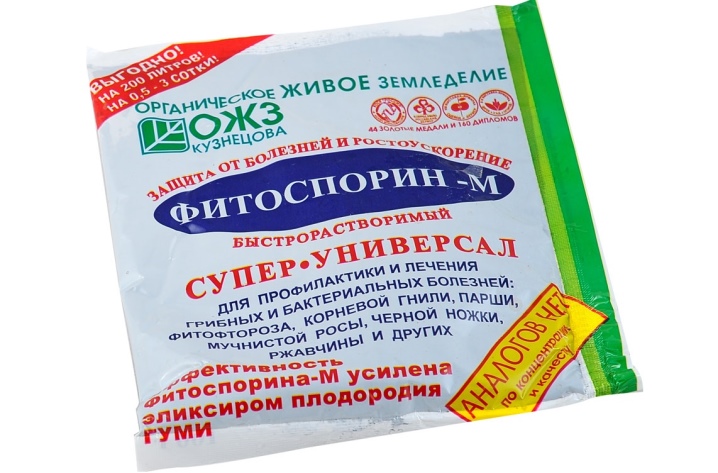
Growth stimulants
One of the final stages in the preparation of tubers is treatment with drugs that accelerate development. Although their use is not mandatory, most gardeners do not skip this stage, since it not only allows you to accelerate the emergence of sprouts and roots, but also strengthens the immune system and increases the ability to tolerate low temperatures and lack of watering.
Stimulants are applied 1-2 days before transferring to open ground or just before it.
Very good results are obtained "Epin", 1 milliliter of which is diluted in 250 milliliters of water. The tubers are processed with the finished mixture, which, after drying, are immediately distributed over the holes. It is proposed to use and "Zircon", for the preparation of which 20 drops are mixed with 1 liter of base.
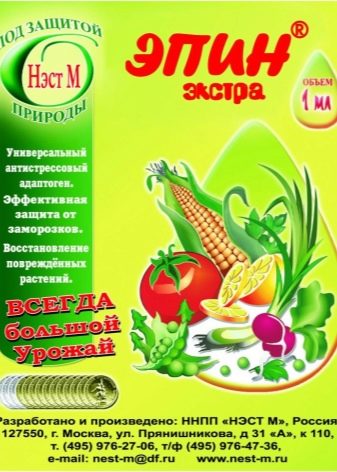
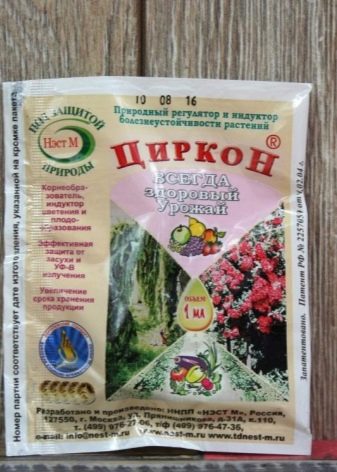
How to cut?
They turn to cutting tubers in cases where there is not enough planting material or a rare variety is to be grown.In principle, cutting a potato is also allowed in cases where the specimen used is excessively large. However, gardeners recommend avoiding this stage of preparation if possible, since during a cold snap or during a rainy period, potato fragments often rot. Medium sized tubers are divided lengthwise into two parts. Dimensional ones can be cut into 3-4 parts, but taking into account the mandatory preservation of at least a pair of eyes on each piece.
For the prevention of putrefactive processes, cutting is carried out on the day the culture is planted. If this is not possible, the procedure is allowed to be carried out 3 weeks in advance.
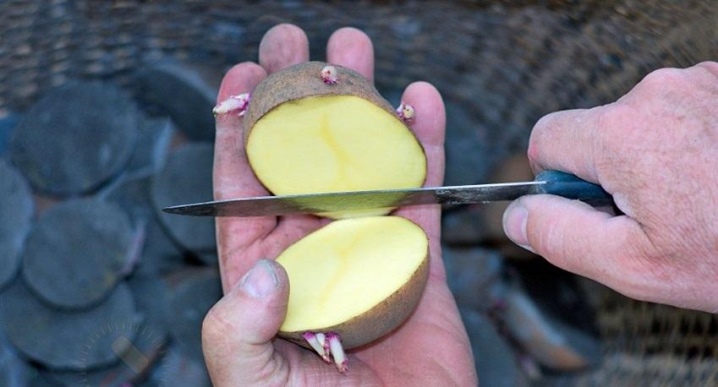
The workpieces will have to be stored in slices upwards in a room with room temperature, low humidity and the possibility of ventilation. Some gardeners insist on sprinkling ash powder on the cut.
It should be mentioned that this stage also allows the use of those potatoes that had little damage. To do this, the spoiled area is cut off, and the exposed pulp is immediately dipped into ash or a 1% solution of copper sulfate.
In the fresh air, such workpieces will have to stay until a crust appears.
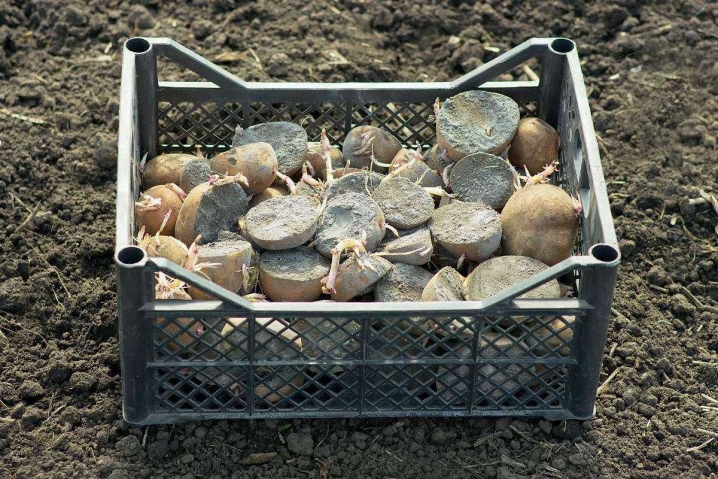
Possible problems
According to agricultural technology, the length of potato sprouts should not exceed 5 centimeters. However, if the potatoes were dug up too early, or if they were planted late, then these shoots will stretch out and become thinner. It will be impossible to plant such planting material: most likely, the white processes will intertwine, and it will not be possible to separate them without injury.
If it is impossible to untangle the sprouts, then it is better to break off the thinnest and weakest, and leave the strong ones to develop further... If the processes have reached excessive length, but have not intertwined with each other, then you can leave them intact. In this case, however, you will have to dig a larger hole and sprinkle it with ash, and you will need to place the material inside with greater accuracy.
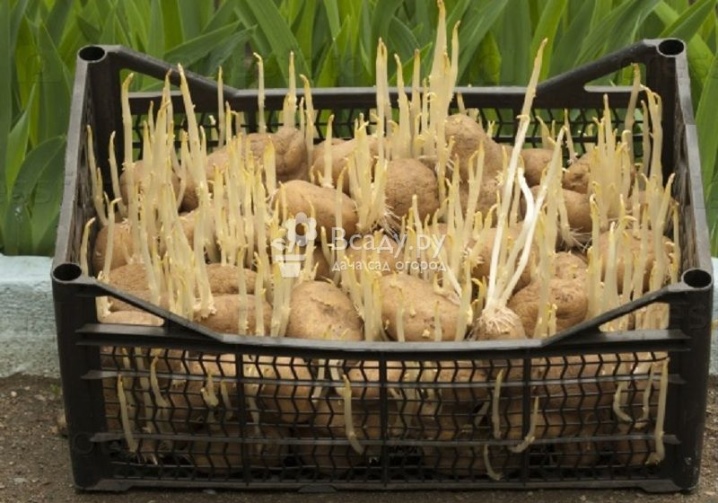
Finally, if the length of the sprouts exceeds 20 centimeters, then a day or two before planting, the top of them can be shortened to 10-15 centimeters, and then sprinkled with ash powder or treated with potassium permanganate.
If it happened that the potatoes did not sprout, then it is still allowed to use them. However, planting should be carried out only in warm soil, and in case of dry soil - also moistened. It is likely that the seedlings will hatch a few weeks later, the harvest will not be as profitable, and the weed control will be more intense.
In a situation when potatoes, on the contrary, germinate ahead of time, the temperature in the place of storage drops to +1 - +2 degrees. You can also completely break off existing white shoots and just wait for new ones to appear.
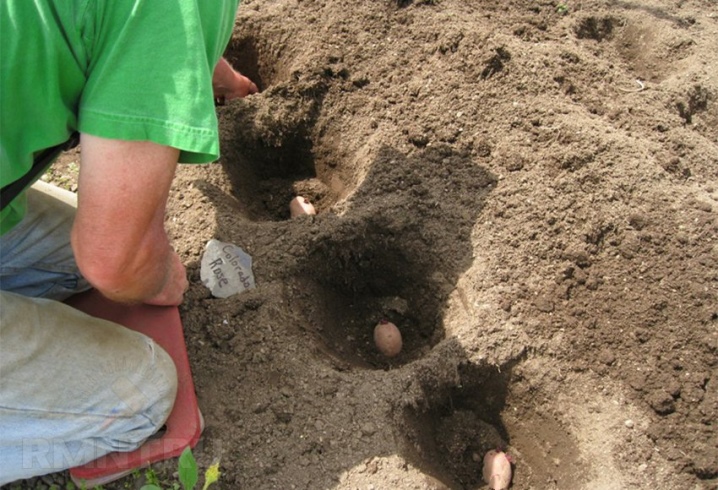













The comment was sent successfully.